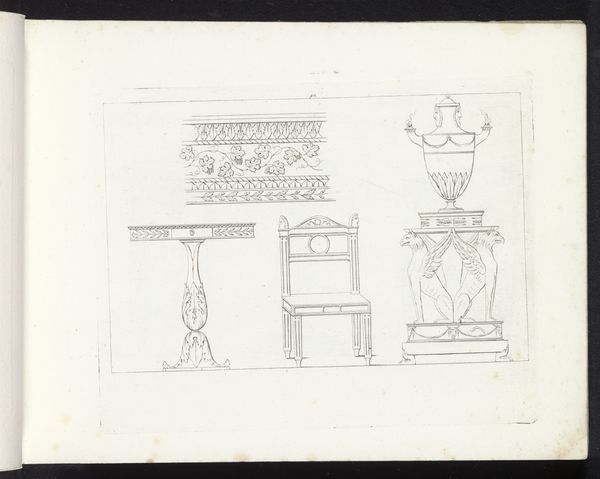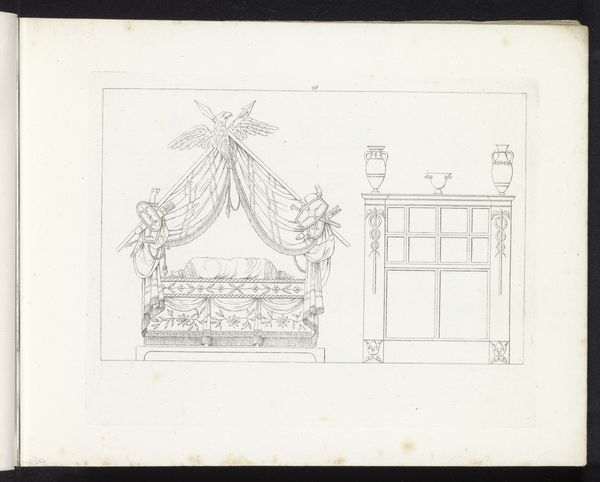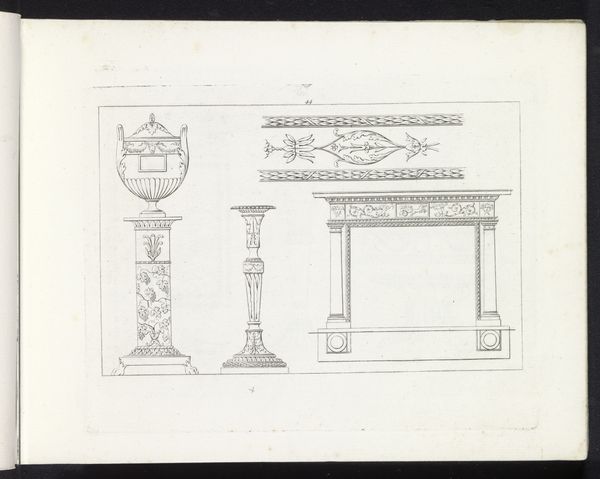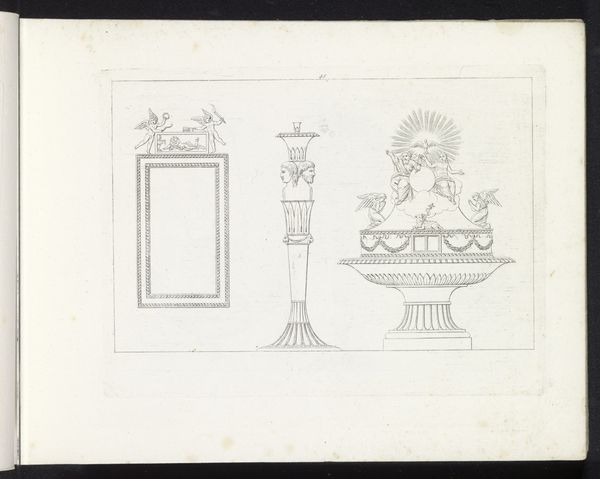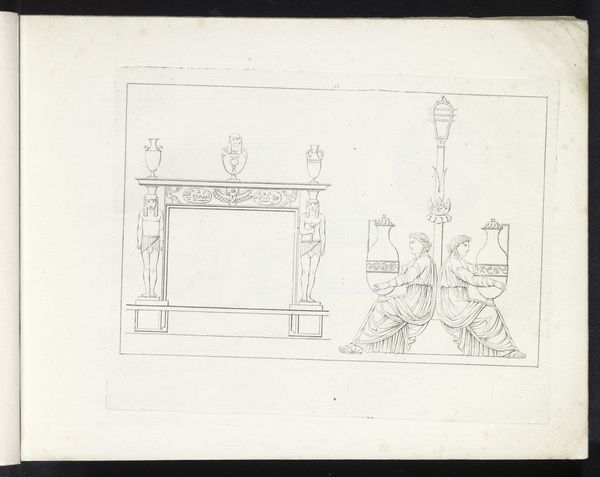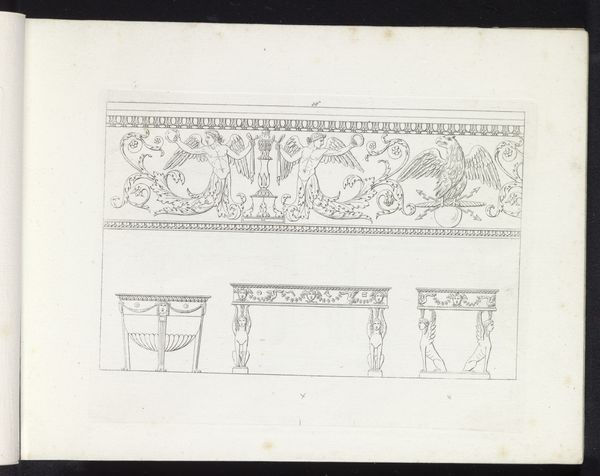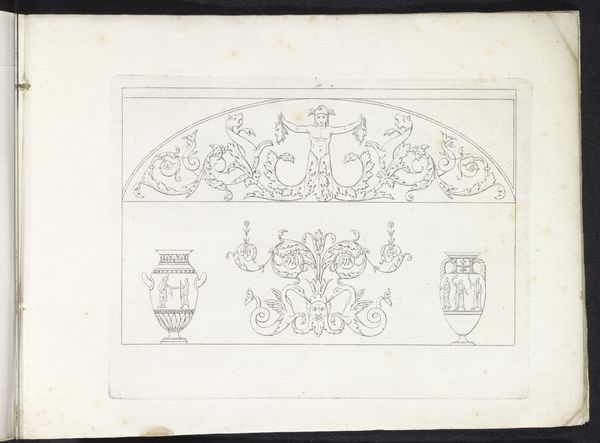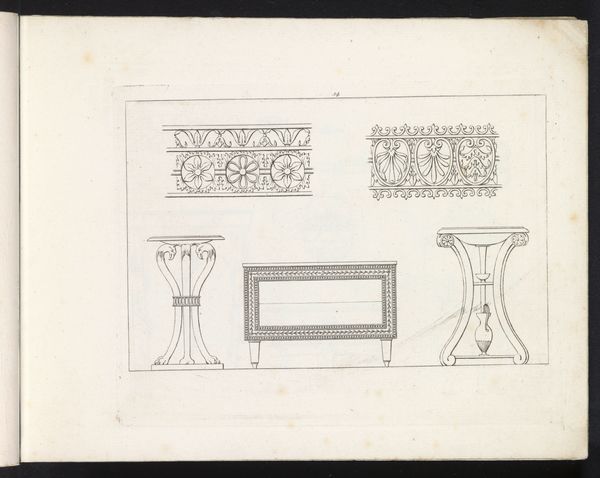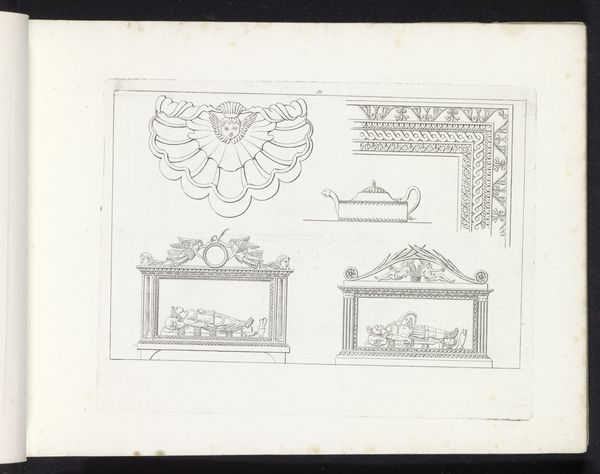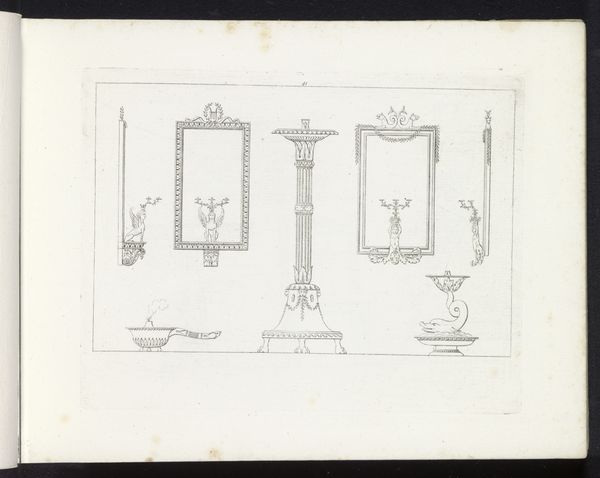
drawing, paper, ink, pencil
#
drawing
#
neoclacissism
#
pen sketch
#
paper
#
ink
#
geometric
#
pencil
Dimensions: height 165 mm, width 214 mm
Copyright: Rijks Museum: Open Domain
Editor: Here we have "Writing Table and Arabesques" by Pietro Ruga, made around 1817, using ink, pencil, and pen on paper. It reminds me of architectural drawings, with its precise lines. What can you tell us about this piece? Curator: Considering the Neoclassical movement, the drawing signals a deep engagement with materials beyond mere representation. Look at the rendering of the desk—it speaks to the burgeoning industrial era. The drawing captures not only form but suggests the means of its potential production. Editor: So, it’s about the possibility of *making* this desk, more than the desk itself? Curator: Precisely. The parallel consideration of "arabesques" highlights a tension. These ornate designs, often associated with handcrafted luxury, exist in contrast with the desk's implied mass production. The medium - pencil and ink - further underscores this division: a design meant for potential reproduction painstakingly rendered by hand. Editor: That’s interesting. I hadn't considered the arabesques in relation to the desk’s potential manufacturing. It makes me wonder about the intended audience, and how they engaged with these emerging possibilities of the time. Curator: Indeed. Was this meant for an artisan’s workshop, to aid production, or for a patron to select the style, contributing to a growing culture of design and consumption? It makes one reconsider divisions of labor within production, where design itself can become a commodified form. Editor: Seeing it as less about the finished product and more about the materials, process, and social implications really changes how I understand the image. Curator: Exactly. This close look makes visible not only the what, but also how and for whom.
Comments
No comments
Be the first to comment and join the conversation on the ultimate creative platform.
